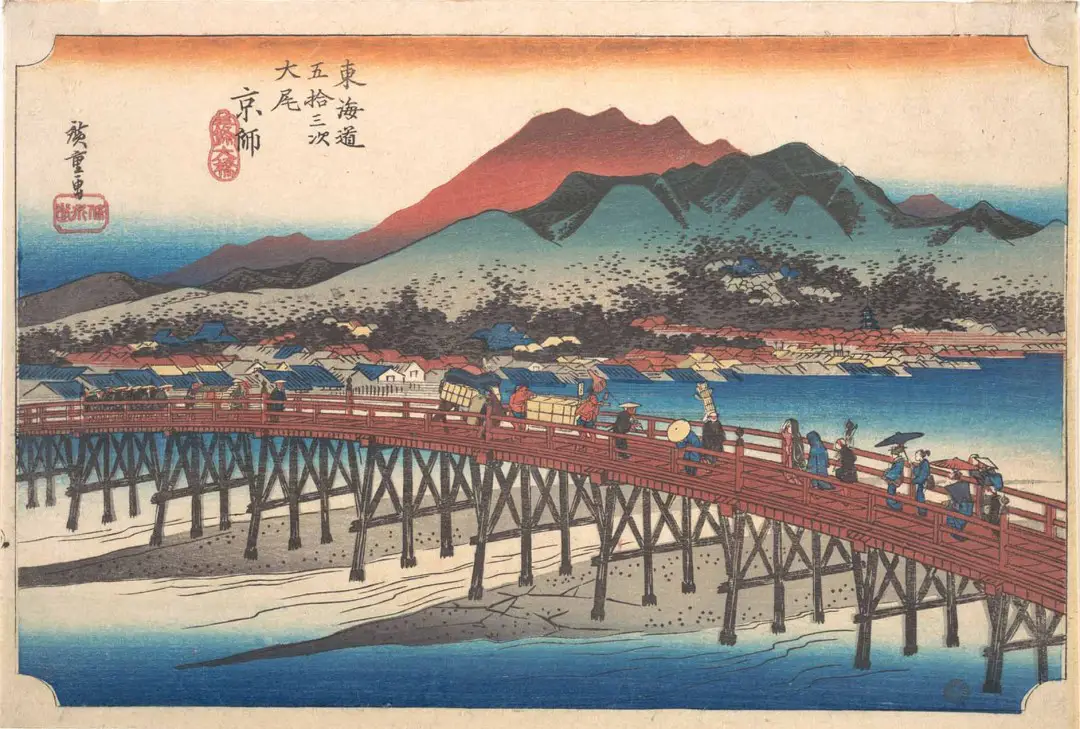The Edo Period is one of the more famous eras in Japanese history. It is also one of the more misunderstood periods.
In pop culture, Edo is associated with sword-swinging samurai, feudal lords, and castle towns. While that image is not false, it’s not completely accurate.
However, Edo was a time when Japan isolated itself from the rest of the world. From our modern, internationally-connected perspective, isolation may sound awful. But it allowed the country to cultivate native Japanese arts and culture without outside interference.
Table of Contents
- Edo Period Summary
- Early Edo: Tokugawa Takes Over
- Government and the Economy
- Edo Period Art and Culture
- Changes
- The End of the Edo Period
Edo Period Summary
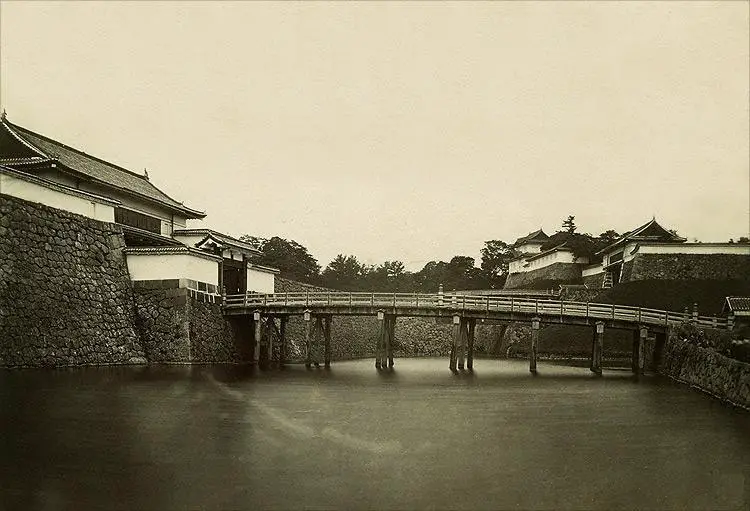
The Edo Period lasted from 1603 to 1867. It is named for the city of Edo, a castle town which served as the home base for the Tokugawa Shogunate. (Edo is also the origin of modern-day Tokyo.)
As shoguns, the Tokugawa clan ruled Japan for 264 years under a militaristic, feudal system. Feudalism placed the shogun at the top of the power structure, but regional daimyo (feudal lords) had local control. Society was rigidly structured, and change was frowned upon.
Although feudalism had existed in Japan since the Kamakura Period (1185-1333), the Tokugawa added a new twist — a strict anti-foreigner, anti-trade policy of national isolation.
This isolation kept Japan in the dark about science and international politics. But it also produced some famous art.
Early Edo: Tokugawa Takes Over
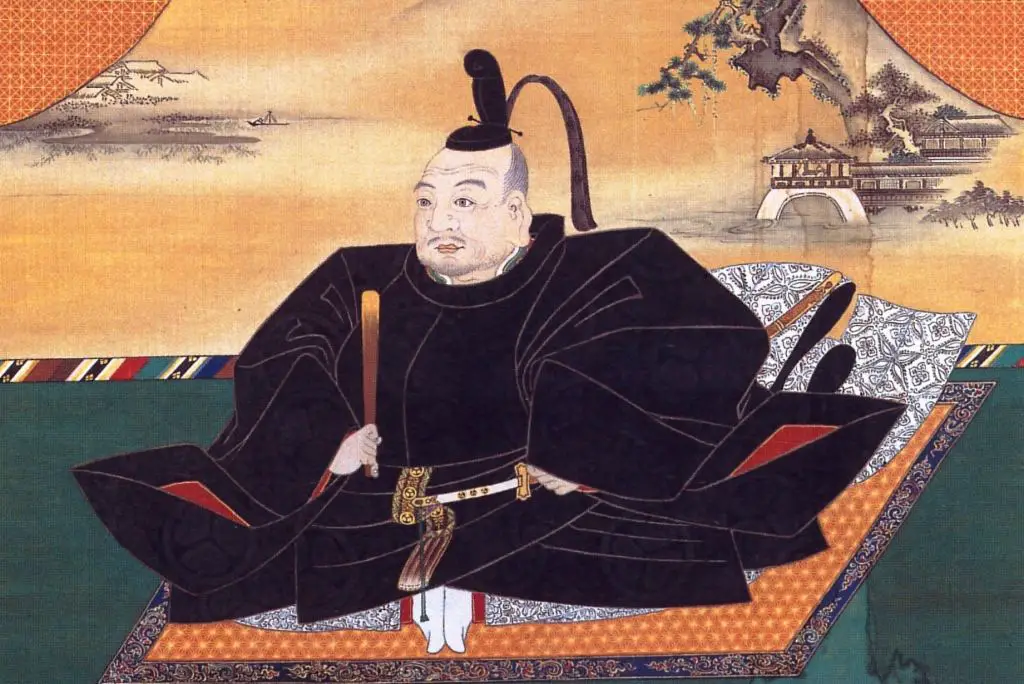
The Edo Period grew out of the Sengoku Period, a.k.a. the Warring States Period. (This period was different from China’s Warring States Period.)
Starting in 1467, the Sengoku was a period of civil war, when warlords fought for control of Japan. The Sengoku Period’s most famous leaders were the “Three Unifiers” — Oda Nobunaga, Hideyoshi Toyotomi, and Ieyasu Tokugawa.
Tokugawa defeated his enemies to become shogun. However, he only held the title for two years before stepping down. (This was a smart PR move, because it put his son in charge, and helped establish the Tokugawa as rightful rulers.)
Even after he officially “retired,” Ieyasu still accomplished a lot:
- Supervised the construction of Edo Castle (now part of Tokyo’s Imperial Palace)
- Created policies dealing with foreign trade
- Expelled Christians, especially Catholic missionaries
- Solidified control of Japan by killing the last of his Toyotomi rivals
At the beginning of the Edo Period, the Tokugawa clamped down on foreign trade. The Dutch were the only Europeans allowed to trade with Japan. The Dutch had a special port island, Dejima (a.k.a. Tsukishima) in Nagasaki.
Japan also traded with China, Korea, the Ainu (who controlled part of Hokkaido), and the Ryukyu Kingdom (Okinawa and other islands south of Japan).
Before the Edo Period, the Portuguese had traded with Japan — which is the origin of tempura, and castella (a type of cake). But the Tokugawa blamed the Portuguese for the Shimabara Rebellion, an uprising of Japanese Catholics in 1637-1638.
The shogun expelled the Portuguese. The Dutch, who helped put down the rebellion, were allowed to stay.
Government and the Economy
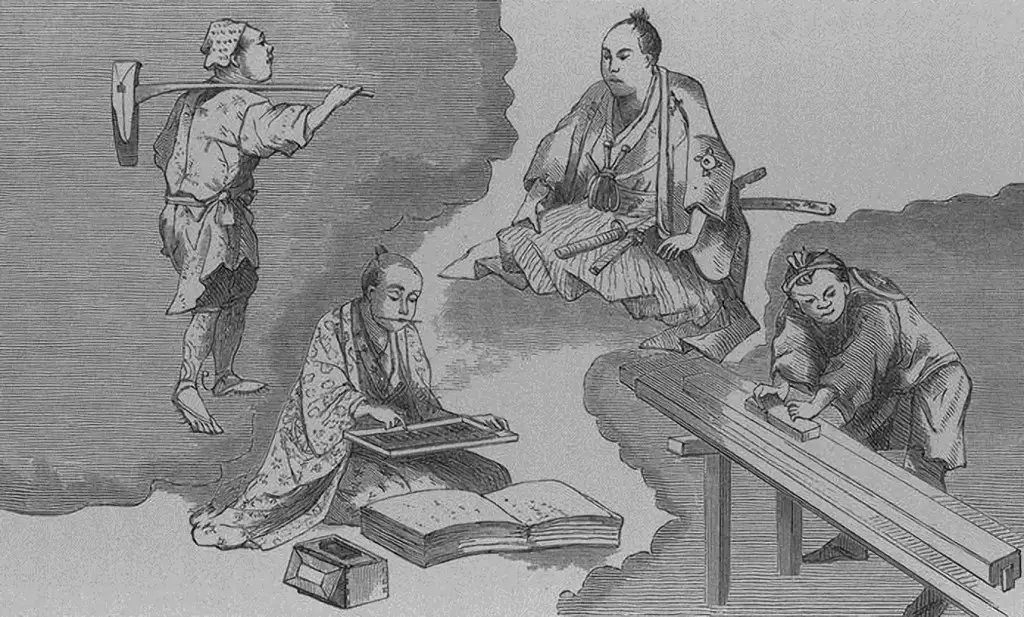
Under Japanese feudalism, the military held power.
The emperor and his noble court still existed in Kyoto, which had been Japan’s capital since the Heian Period (794-1185).
But while the emperor had a lot of ceremonial power, an imperial palace, servants, and everything that went with being the descendant of the goddess Amaterasu, he had no actual political power.
Technically, the shogun was the emperor’s commander-in-chief.
The daimyo were divided into direct relatives of the Tokugawa, trusted allies, and Tozama “outsiders.” In order to keep these lords under control, daimyo had to live part of the time in Edo.
Each daimyo had his faithful servants, the samurai. The samurai followed various moral codes of loyalty, honor, duty, etc., which are collectively known as Bushido.
Edo society placed peasants (farmers and farm workers) directly underneath the military class, because they produced food. Below them were craftsmen, artisans, and toolmakers. Although craftsmen didn’t grow food, they proved their worth by making weapons and tools.
Traders, shopkeepers, and merchants were very low in status. Despite this, the craftsman and merchant classes grew rich during the Edo Period.
Feudal Japan also had “untouchables.” They performed tasks which were necessary, but considered “unclean” and outside of normal society. Undertakers, butchers, tanners, and street cleaners were among the “unclean” people.
Edo Period Art and Culture
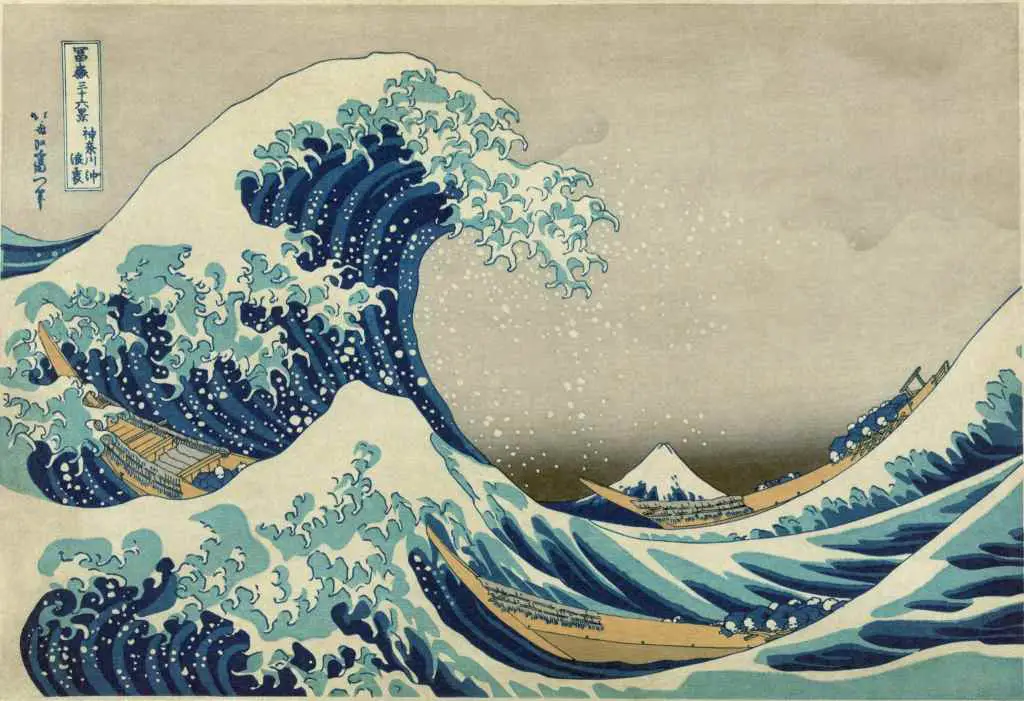
During the Edo Period, Japanese culture grew, even as links to the outside world shrank. For example:
- The Rinpa school of art featured stylized or abstract natural themes; often against a gold or silver background.
- Kabuki theatre was invented. The stylized productions featured historical events, contemporary romance, and dance.
- Urban growth, and the rise of the merchant class, meant that Japan now had an audience for mass-produced Ukiyo-e art. This art featured kabuki actors, women, landscapes, and other popular themes.
- Speaking of Ukiyo-e, Hokusai, Hiroshige, and others produced all of those now-famous woodblock prints of tall waves, Mt. Fuji, and the Tokaido (main road) during the Edo Period.
- The 47 Ronin Story was a popular tale which was made into plays, books, and other media. The story, which was based on true events, featured bushido values, as a group of loyal samurai sought revenge against a villainous minister.
- During the 1850s, Ukiyo-e would inspire European Japonisme, which influenced the French Impressionists.
Changes
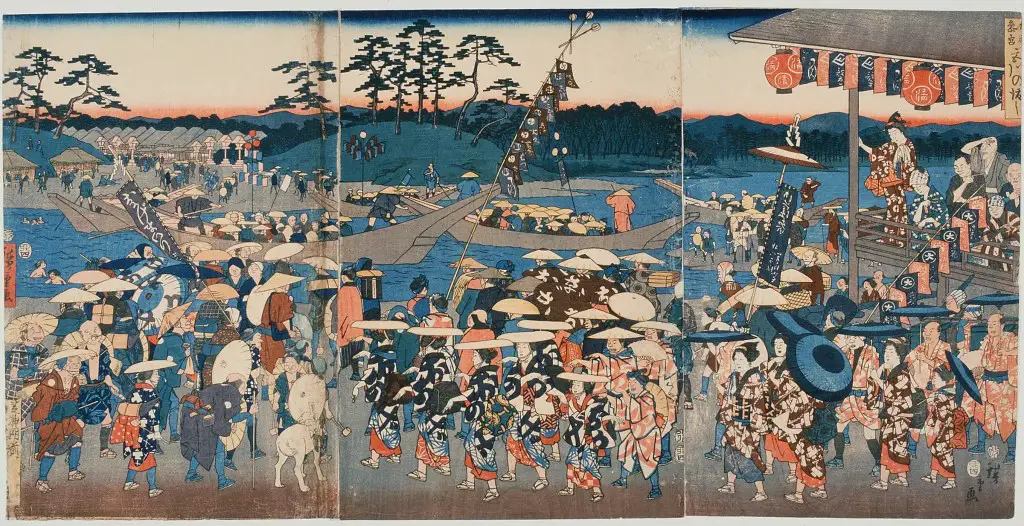
As the Edo Period settled down, the bloody battles of the Sengoku were replaced by years of relative peace.
The peaceful nature of the Edo Period created a population explosion. The city of Edo grew from a small town into one of the largest cities in the world. In 1721, Edo had reached 1 million people.
Since the samurai were no longer needed as soldiers, many entered into civil service. Even before the Edo Period, the samurai had taken part in tea ceremonies, ikebana (flower arranging), poetry, and other aristocratic pursuits. The Edo Period gave them more time for these things.
However, the “way of the warrior” principles of Bushido remained popular, and even expanded beyond the warrior class.
The Tokugawa also promoted Neo-Confucianism. Neo-Confucian thought took classic Confucian philosophy, but added humanist and rational ideas. Japanese culture developed a blend of Shinto, Buddhist, Bushido, and Neo-Confucian ideas.
The End of the Edo Period

By the 1800s, Edo Japan found that it could no longer hold back European and American interference. In 1808, the British warship HMS Phaeton entered Nagasaki, flying a false Dutch flag. The British took hostages, and demanded supplies.
There had been previous minor encounters — some peaceful, others more violent. But after 1808, the shogun stepped up coastal defenses, and also made attempts to study the West.
The beginning of the end came in 1853, when U.S. Commodore Matthew Perry arrived with his “Black Ships” and demanded that Japan open up.
The shogunate was forced to sign a number of unequal treaties which favored Americans and Europeans.
The Tokugawa clan’s weakness in the face of foreign threats angered some daimyo, especially in the Satsuma and Choshu domains. These areas were led by Tozama outsiders who opposed the Tokugawa, and supported the return of the emperor.
The result was the Bakumatsu — a period of rebellions, battles, and civil war, which finally ended with the restoration of the emperor, and the downfall of the Tokugawa.
Conclusion

Although the Edo Period had ended, Bushido values would continue to influence Japanese society long after the samurai ceased to exist.
The Edo Period would also have a lasting impact on modern art and culture. The Edo Period lives on in plays, books, anime, and especially jidaigeki (historical period dramas), such as the classic samurai films of Akira Kurosawa (Yojimbo is pictured above). Kurosawa’s films would influence Spaghetti Westerns, and even Star Wars.
All of which makes the Edo Period worth learning about, even today.

